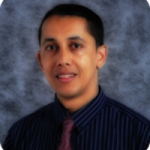Shyam Sharma
Sitting down to write this post on diversity and ELT, I remember a story that scholar David Foster Wallace tells in a famous college graduation speech. Two younger fish ask an older one: “What the hell is water?” The point of the story is that “…the most obvious, important realities are often the ones that are hardest to see and talk about.”
The point I want to make in this post is that while we are a nation of very diverse peoples, cultures, languages, and so on, we have to pinch ourselves to remember that we are diverse. I argue that as educators, it is worth pinching ourselves and our students—intellectually, that is—into realizing the value of diversity as a broader goal of education, especially in a country like ours and an interconnected world like today’s.
[youtube=https://www.youtube.com/watch?v=DKYJVV7HuZw]
[This YouTube video is an animated version of parts of Wallace’s speech]
We’ve been told that Nepal has been a garden of “four castes and thirty-six shades” of people; indeed, within an area of 850 by 200 kilometers, we speak more than a hundred languages and are extremely diverse in a variety of ways. However, the garden metaphor was meant to drive home the value of unity more than diversity. The emphasis on nationhood and unity is usually a goodie goodie way to deny that there are deep divisions, structural injustices, and discrimination woven into the sociopolitical fabric of our society. So, it is absolutely time that we situate (even) the teaching of English within the context of seeking to promote respect for diverse peoples, cultures, languages, and epistemologies (even) in a small but complex country like ours.
Years after the stillbirth of a new democracy that has led to an utterly corrupted political environment, many of us are almost yearning that we had a stable, if slow, social progress under a more “unified” system (as in political power being centralized and enforced to keep things moving as the agents of that power structure wished). But a failed experiment in democracy cannot be replaced with the same old bad ideas based on the centralization and hierarchy of power and privilege. As educators, we have to cultivate and promote the diversity of languages, cultures, local knowledge bases, and worldviews.
What does the diversification of knowledge and perspectives have to do English language teaching? A lot of things. First of all, we don’t teach language in a vacuum. We don’t teach it without a social vision, intellectual grounding, and even moral compass. Our students must learn to use language effectively as they grow intellectually and socially. They must learn how to communicate across cultural differences, language barriers, and digital divides. Learning the English language in particular—as a medium of international communication and connection—means being able to go beyond learning just the words and sentences and idioms out of context. Our students cross physical borders, virtually connect to people from all kinds of backgrounds from around the world, and navigate a complex world of information more than ever before.
We cannot afford to simply focus on English as a medium (and say that we teach English for teaching English). We have to ask: medium for what? Learning any language must be put the service of intellectually growing, communicating, building community, solving social problems, resolving conflict due to difference, cultivating diversity of ideas and perspectives, wading through a world of information overload, sorting the meaningful from the meaningless, exploring new avenues of knowledge, creating new knowledge—and we can go on and on and on. We cannot afford to limit the objective of ELT as ELT. That would be like cooking for cooking (not eating), driving to go nowhere, or reading without understanding anything. Of course, some actions (such as dancing, one might say) don’t need to have a purpose beyond just doing them. But educators can’t afford to not situate their work in broader social contexts and purposes. And that instantly introduces the idea of diversity into ELT.
The cultivation and promotion of diversity—of learning multiple languages, of learning language to achieve different purposes, of using language teaching to diversify our students’ knowledge and perspectives—is, or should be, the essence of our profession. We are preparing citizens for a nation where diversity is like water to the fish. And we are also preparing citizens of an increasingly interconnected and interdependent world that is ever more diverse, a world where our students will have to appreciate and navigate that diversity in order to survive and succeed.
Let me conclude by citing an inspiring excerpt from the same speech by David Wallace. If you let your education to help you think in diverse ways, Wallace suggests,
you can choose to look differently at this fat, dead-eyed, over-made-up lady who just screamed at her kid in the checkout line. Maybe she’s not usually like this. Maybe she’s been up three straight nights holding the hand of a husband who is dying of bone cancer. Or maybe this very lady is the low-wage clerk at the motor vehicle department, who just yesterday helped your spouse resolve a horrific, infuriating, red-tape problem through some small act of bureaucratic kindness. It just depends what you what to consider.
It doesn’t matter if our students are able to speak English with a ‘bhatatata fluency’. We must use the opportunity of teaching an important world language in order to help them navigate the rich and complex world of languages, ideas, world views, opportunities to create new knowledge, and possibilities for creating and belonging to diverse communities in the world.
The question is– English for what? And there must be a variety of answers to this question about the broader purpose of our work as educators.
—
